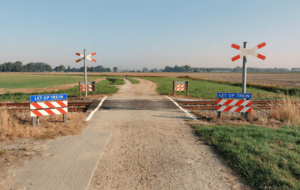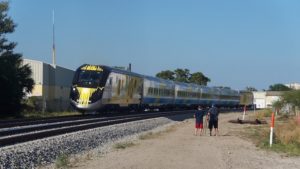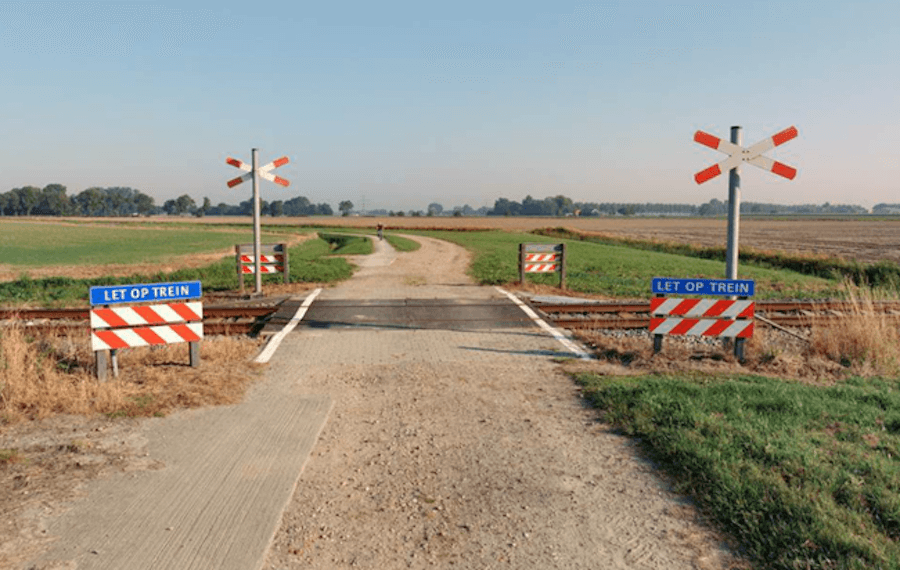After the recent fatalities involving Brightline trains on the Florida East Coast Railroad, Railway-News asks what the industry can do to eliminate trespassing on the tracks and reduce fatalities.
The start of services in South Florida on 13 January by Brightline, the first private rail system in the United States since 1983, was supposed to be the cheerful start of a new initiative in public transit in the state; connecting Fort Lauderdale and West Palm Beach on the Florida East Coast Railway. Since then, Brightline attracted national media attention of a very different tone when three people were killed by the trains in the first two weeks of service. On 12 January, however, the day before even the first paying passenger had boarded the train, Melissa Lavell was killed whilst trying to cross the tracks.
Of the two other victims, Jeffrey D. King was also killed on impact after he apparently cycled along the tracks whilst a third person suffered serious injuries. The publicity surrounding the new service has focussed on safety flaws, and corporate responsibility. The families of the people hit and local representatives have called for Brightline to accept responsibility for these incidents. However, South Florida Regional Transportation Authority has confirmed that the company complied with all federal and state regulations for safety and the state police have confirmed that they believe all three people had ignored safety warnings, including down guard gates and flashing lights, in attempts to cross the tracks ahead of the train.
The extreme risk of crossing the tracks at all, especially when a train is known to be en route, has prompted general calls for people to be more aware of the current safety precautions. Some locals have complained that the current services which run on the tracks – freight trains and Tri-Rail, a subsidiary of the SFRTA which runs services between Fort Lauderdale and West Palm Beach – are much louder than the newly built Brightline trains which has accustomed people to having more time to cross the tracks before a train arrives, even after the barriers are down. The problem is that the speed of a train or its distance ought not to be a consideration for people who obey the protocols at level crossings. The fact that many people prefer to making an individual judgement on the risk of actually being hit by the train, rather than simply accepting the brief delay in their journey is an issue which transport authorities and train companies must address in addition to the actual construction of a crossing.
The Problem: Isolated Incidents or Common Behaviour?
The furore surrounding these accidents has created a debate on whether people’s responsibility for their own safety around the railroad is mitigated by the expectation that there would be no more risk in crossing the track in front of a Brightline train than any other local engine. The consequences of this grim start for Brightline are uncertain. The reaction is occurring in the context of significant opposition to the operation of high-speed rail in the state at all, and some experts are warning of ‘brand damage’ to Brightline from these incidents, which might affect the planned expansion of services between Orlando and Miami. On the other hand, many locals have questioned the judgement of people who seem to have ignored substantial warnings and stepped on to the tracks. The frequency of these accidents in such a brief period suggests that something is not right, and it is a problem for rail systems around the world.
In November 2016 the European Union published a statistic that 97% of rail accidents in member states were caused by ‘rolling stock in motion or…at level-crossings. The reduction of injury and death around rail systems, from accident or suicide, are a constant concern in the industry. The design of many new metro systems around the world includes platform doors to prevent people jumping or falling on to the tracks. In a 2012 leaflet the European Union Agency for Railways’ Safety Unit reported that only a minority of accidents at level crossings investigated by the National Investigated Body of a member state were ‘solely the fault of road users’ and many were actually caused or exacerbated by ‘insufficiencies in safety management systems’. In 2017 Prorail, which maintains railway infrastructure in the Netherlands, announced that it would eliminate the remaining 123 unguarded crossings on its network, by either upgrading the crossings, or diverting traffic to guarded ones. The guards skipped by the victims of the Brightline collisions did not block the entire crossing. The Australasian Centre for Rail Innovation, which is supported by transport authorities and rail companies in Australia and New Zealand, has completed several research projects on level crossings; the findings of these projects are currently only available to its funders, but one of the questions it sought to answer was whether the design of level crossings can cause difficulties for drivers assessing the length of a train and the distance of it from the crossing. These factors in the design and maintenance of crossings must be reviewed, but part of ACRI’s research has focussed on transgressions in ‘user behaviour’ and it must be acknowledged that there are many accidents across the world every year caused by people’s desire to ignore safety warnings and skip safety barriers.
The Causes: Design or Indifference?
This disregard for the risk itself is a problem which ‘safety management systems’ can mitigate, but cannot prevent and all measures assume expectations of personal responsibility by people on or near stations and trains. Trespassing on the tracks is an offence in most jurisdictions: in the USA penalties vary depending on the state but it is classified as a ‘misdemeanour’ punishable by a fine of up to $1000; in the UK it is punishable by up to one month’s imprisonment. The lesson from the incidents in Florida show that how people perceive these regulations depends on their own experiences of them. The danger of crossing rail tracks, implied by a severe penalty for it, is outweighed by the perception of whether it is a real risk. The people who crossed in front of the Brightline trains assumed that there would be the same level of risk as crossing in front of a Tri-Rail train, and did not account for the different speed of the engines. It seems this is a common problem: On YouTube there are dozens of videos of people around the world walking or driving across train tracks and narrowly missing oncoming trains. The Guardian recently reported that between 2012 and 2017 115 people in the UK have died after being hit by a train and BBC News published a statistic that one person per hour probably trespasses on the tracks; in 2017 22 Floridians were killed by Tri-Rail trains. Sadly, some of these people had intended to let themselves be hit by the train, but others simply never imagined that this might happen to them.
It seems that the frequency of these transgressions arises from two different attitudes to the railway. Firstly, many people, especially in Europe, have become so used to living around trains that they assume that they have sufficiently assessed the risk of being hit, to the point that they might not do so consciously; whilst others, who live in areas with sparse rail coverage are less aware of the risks and do not realise the difference between trespassing on the tracks and jaywalking. The importance of acknowledging this problem is an increasing priority in the approach to developing the technology and protocols for reducing accidents caused by this cognitive dissonance between the theoretical understanding of danger and accepting the actual risk of it. The ACRI has also conducted studies to ‘determine the frequency and context in which transgressions occur’ and the prioritisation of this question, and the indication that transgressions are a likely event, highlight the ubiquity of this problem of ‘user behaviour’ in the cause of these accidents.

Solutions: Signs or Schemes?
The decision by Prorail to decommission unguarded crossings is sensible because these types of guard are definitely outmoded, and the same fate might befall crossings which do not completely barricade the road or path, but the problem is that no barrier will reduce that original desire to circumvent it, and many accidents do not occur at crossings at all, but on the many miles of track where nobody is ever supposed to be.
The abundance of research, reports and recommendations on this issue demonstrate how seriously that the rail industry and governments approach this problem, but in the future it looks like transport authorities and rail franchises will have to become increasingly proactive in reminding people of the unique dangers presented by train tracks. In response to the accidents on the Florida East Coast line, Brightline has commissioned new, larger signs to warn people of the dangers of trespassing on the tracks and also initiated a scheme of Safety Ambassadors who will patrol the crossings on the sections of the lined used by their trains. The New Zealand Transport Agency has published resources on rail safety for primary schools around the country and representatives of the national train company, Kiwi Rail, are also available to visit classrooms.
The British Transport Police have opted for a more direct approach by publishing videos of people actually being hit by trains on their website. In 2000 the British Government launched THINK! An extensive, long-term advertising campaign which warned people, especially the young, of the dangers of drink-driving. The campaign is generally considered very successful in imparting its messages across a variety of media: television, radio and online; a report produced by the Department of Transport in 2009, which evaluated the success of it demonstrated the extent to which awareness of the messages had filtered into people’s consciousness’ beyond simply watching an advertisement. It seems unlikely that the more specific issue of trespassing on train tracks would attract the level of funding and long-term commitment warranted by a drink-driving campaign, but it does illustrate the benefits of investing in schemes which challenge and change attitudes to dangerous behaviour which can seem safe, simply because it is common. In the UK the recent launch of a campaign by Network Rail specifically focussed on warning people of the danger of trespassing on electrified tracks highlights the increased engagement with this type of messaging. These initiatives, might be the best route ahead for safety because it addresses the problem – trespassing – before people have even stepped near the tracks, regardless of whether the guards are up or down.



























